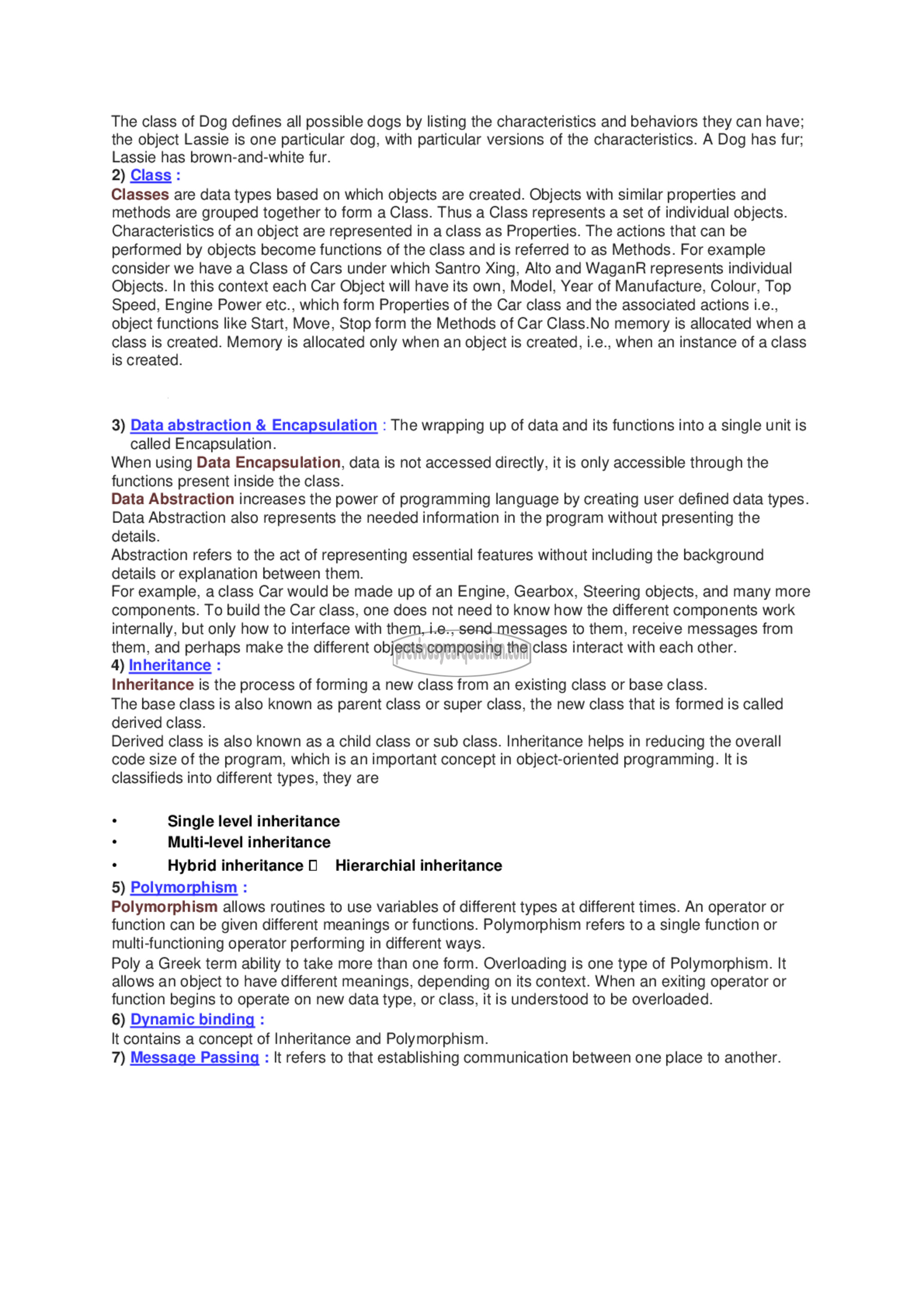APJ ABDUL KALAM TECHNOLOGICAL UNIVERSITY Previous Years Question Paper & Answer
Semester : SEMESTER 6
Subject : Object Oriented Programming
Year : 2018
Term : MARCH
Scheme : 2015 Full Time
Course Code : EC 312
Page:3
The class of Dog defines all possible dogs by listing the characteristics and behaviors they can have;
the object Lassie is one particular dog, with particular versions of the characteristics. A Dog has fur;
Lassie has brown-and-white fur.
2) Class :
Classes are data types based on which objects are created. Objects with similar properties and
methods are grouped together to form a Class. Thus a Class represents a set of individual objects.
Characteristics of an object are represented in a class as Properties. The actions that can be
performed by objects become functions of the class and is referred to as Methods. For example
consider we have a Class of Cars under which Santro Xing, Alto and WaganR represents individual
Objects. In this context each Car Object will have its own, Model, Year of Manufacture, Colour, Top
Speed, Engine Power etc., which form Properties of the Car class and the associated actions i.e.,
object functions like Start, Move, Stop form the Methods of Car Class.No memory is allocated when a
class is created. Memory is allocated only when an object is created, i.e., when an instance of a class
is created.
3) Data abstraction & Encapsulation : The wrapping up of data and its functions into a single unit is
called Encapsulation.
When using Data Encapsulation, data is not accessed directly, it is only accessible through the
functions present inside the class.
Data Abstraction increases the power of programming language by creating user defined data types.
Data Abstraction also represents the needed information in the program without presenting the
details.
Abstraction refers to the act of representing essential features without including the background
details or explanation between them.
For example, a class Car would be made up of an Engine, Gearbox, Steering objects, and many more
components. To build the Car class, one does not need to know how the different components work
internally, but only how to interface with them, i.e., send messages to them, receive messages from
them, and perhaps make the different objects composing the class interact with each other.
4) Inheritance :
Inheritance is the process of forming a new class from an existing class or base class.
The base class is also known as parent class or super class, the new class that is formed is called
derived class.
Derived class is also known as a child class or sub class. Inheritance helps in reducing the overall
code size of the program, which is an important concept in object-oriented programming. It is
classifieds into different types, they are
⋅ Single level inheritance
∙ Multi-level inheritance
∙ Hybrid inheritance 0 Hierarchial inheritance
5) Polymorphism :
Polymorphism allows routines to use variables of different types at different times. An operator or
function can be given different meanings or functions. Polymorphism refers to a single function or
multi-functioning operator performing in different ways.
Poly a Greek term ability to take more than one form. Overloading is one type of Polymorphism. It
allows an object to have different meanings, depending on its context. When an exiting operator or
function begins to operate on new data type, or class, it is understood to be overloaded.
6) Dynamic binding :
It contains a concept of Inheritance and Polymorphism.
7) Message Passing : It refers to that establishing communication between one place to another.
